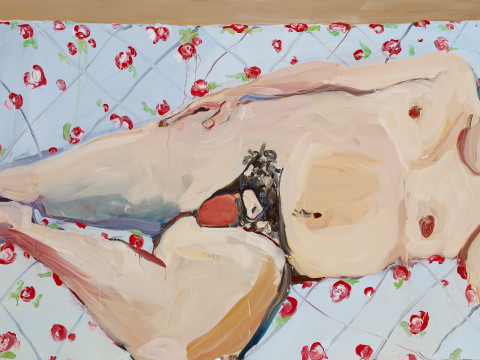
Point of view: What it's like to sit for a portrait
By Charles Saumarez Smith
Published on 20 October 2014
As our exhibition of the great portraitist Giovanni Battista Moroni opens, the RA's Charles Saumarez Smith reflects on the experience of having his own portrait painted.
What might it have been like for a member of the nobility, like Gian Gerolamo Grumelli (The Man in Pink in the Fondazione Moroni) or Prospero Alessandri (pictured above), to sit for Giovanni Moroni in the early 1560s?
Each time that I have sat for my portrait, the physical and psychological experience has been very different. The first time was when I was Director of the National Portrait Gallery. I sat in my office upstairs in Orange Street for a young artist, Stuart Pearson Wright, who had recently graduated from the Slade, and won the BP Travel Award in 1998 with a large Hogarthian composition. He asked if I would sit for him partly because he was building up a portfolio of portraits and partly because he was grateful for the encouragement he had been given by the NPG (at the Slade he had been marked down as a mere illustrator, whereas we all regarded him, as I still do, as exceptionally talented).

Stuart sat very close, unusually close, staring forensically at the texture of my face as if he was an old fashioned medical practitioner with thick pebble glasses looking for signs of leprosy in the skin. Eventually I fell asleep, exhausted by the proximity, and I always felt that the portrait was slightly better before I fell asleep. The result was more akin to the work of Memling than Moroni, highly meticulous in its depiction of the details of the face, psychologically effective by virtue of the specificity of its depiction. My wife says that when I die, she will be able to remember me by the portrait.
The second time I sat for my portrait was on leaving the National Portrait Gallery as its Director. It was an official portrait, painted by Tom Phillips RA, who had been one of my Trustees. Each week, on a Friday morning, I would travel to his studio in Peckham for a sitting, which was documented on film (Coluga Pictures' Portrait, directed by Bruno Wollheim, narrated by Alan Bennett, 2004). Tom did a great number of drawings, many more than would be normal, as a way, as he described it, of 'learning my face'. He described the portrait as being in the spirit of Giovanni Bellini's portrait of Doge Leonardo Loredan in the National Gallery: a document of officialdom, recorded by a particular impassive and impenetrable look which people in positions of public authority have traditionally either acquired or assumed in order to detach themselves from the experience of the everyday and of having to engage with everyone they meet individually.
This is more the style of Moroni. You know who they are as much by what they are wearing — the hat and the sword, the pumps and the fur — as by anything particularly psychologically penetrating in their face or their look. They are documents of social position: the exterior of the person, not their interior. But it is still like meeting them across the centuries, each of them waiting and watching the artist for the end of the sitting.
Giovanni Battista Moroni is in The Sackler Wing of Galleries until 25 January 2015.
Charles Saumarez Smith is the Secretary and Chief Executive of the Royal Academy of Arts
Related articles

How to read it: Annie Swynnerton's The Letter
15 July 2020

How to read it: Frank Cadogan Cowper's Vanity
22 April 2020

Chantal Joffe RA: "If I can paint it, I can deal with it"
23 February 2018

How to read it: Henry Raeburn's Boy and Rabbit
4 January 2018

